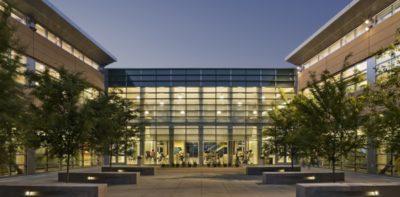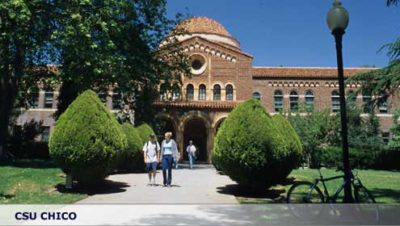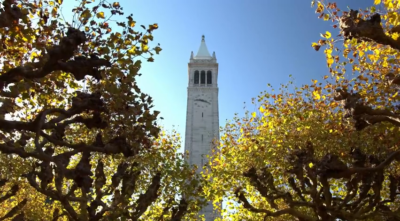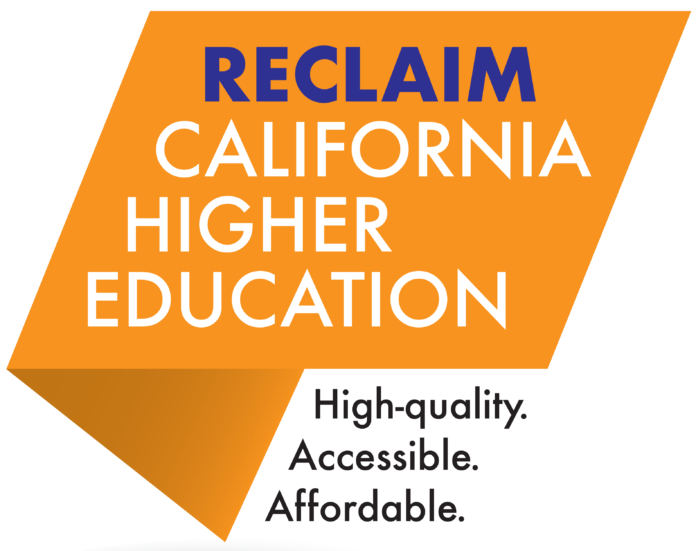Generations hence will wonder in amazement why Californians acquiesced to the steady weakening of the state system of higher education in the early twenty-first century. California’s three-tiered system of higher education is justifiably the envy of 49 states.
If Hollywood and Silicon Valley are the symbols of California’s economic prowess, our colleges and universities are the engines that make them possible. Consider:
 The California Community Colleges is the largest higher education system in the nation. Our 112 local colleges provide more than 2.9 million students with basic skills education, workforce training, and preparation for four-year universities. They attract working students and ambitious immigrants in very large numbers. I used my local community college to learn blueprint reading and geometric dimensioning and tolerances to become a machinist; I also took classes in physics because they were exceptionally good. Almost 60% of our state college graduates and about a third of our University graduates transferred in as juniors from a community college.
The California Community Colleges is the largest higher education system in the nation. Our 112 local colleges provide more than 2.9 million students with basic skills education, workforce training, and preparation for four-year universities. They attract working students and ambitious immigrants in very large numbers. I used my local community college to learn blueprint reading and geometric dimensioning and tolerances to become a machinist; I also took classes in physics because they were exceptionally good. Almost 60% of our state college graduates and about a third of our University graduates transferred in as juniors from a community college.
 California State University has 23 campuses, some 427,000 students, and 44,000 faculty and staff. It is the largest, most diverse, and one of the most affordable university systems in the country. CSU graduates 44% of the life sciences college graduates in California, more than 60% of all of the our teachers, including 9 out of 10 of California’s public school educators, and 45% of the state’s computer and electronic engineers. CSU is an outstanding resource for underserved populations, awarding more than half of the bachelor degrees earned by African American, Latino, and Native American students in California. CSU is the backbone of economic mobility in California.
California State University has 23 campuses, some 427,000 students, and 44,000 faculty and staff. It is the largest, most diverse, and one of the most affordable university systems in the country. CSU graduates 44% of the life sciences college graduates in California, more than 60% of all of the our teachers, including 9 out of 10 of California’s public school educators, and 45% of the state’s computer and electronic engineers. CSU is an outstanding resource for underserved populations, awarding more than half of the bachelor degrees earned by African American, Latino, and Native American students in California. CSU is the backbone of economic mobility in California.
The University of California is a top-tier research university and an economic catalyst for the state. UC’s ten campuses enroll more than 220,000 students and employ more than 170,000 faculty and staff. Its three national labs manage hundreds of millions of dollars of state and federal research. A recent study estimated that UC generates $46.3 billion in annual economic activity for California, not counting benefits such as technology startups that grow directly out of university research. We are almost exactly a $2 trillion state economy, so UC alone is more than 2% of the California economy.
Berkeley remains the premier UC campus and an amazing public institution, despite its bottomless capacity for self-parody (disclosure: my wife is a dean at Cal). A National Research Council analysis of U.S. universities concluded that UC Berkeley has the largest number of highly ranked graduate programs in the country. The analysis ranked doctoral programs within a range (such as between 1st and 5th), and found that 48 out of the 52 Berkeley programs assessed ranked within the top 10 nationally.
Over the past decade (2000-2009), the National Science Foundation awarded more Graduate Research Fellowships to UC Berkeley students than to those of any other university (MIT was 2nd; Stanford 3rd; Harvard 4th).
135 Berkeley faculty are members of the prestigious National Academy of Sciences, exceeded only by Harvard with 150. 91 are members of the National Academy of Engineering, exceeded only by MIT with 105. Membership in the American Philosophical Society, the American Academy of Arts and Sciences, or winners of National Medal of Science teach overwhelmingly at three schools — Berkeley, Harvard and Stanford. Only one of these is a public institution.
 Berkeley’s single proudest claim however, ahead even of its 24 national rugby championships, is that it enrolls more students on Pell Grants than all of the Ivy League schools put together. A Pell Grant is a scholarship based on financial need. By serving academically qualified students on Pell Grants, Berkeley ensures that smart, hard-working kids from low income families can get a top-flight education.
Berkeley’s single proudest claim however, ahead even of its 24 national rugby championships, is that it enrolls more students on Pell Grants than all of the Ivy League schools put together. A Pell Grant is a scholarship based on financial need. By serving academically qualified students on Pell Grants, Berkeley ensures that smart, hard-working kids from low income families can get a top-flight education.
The combined effects of this system on the California economy are astonishing. Community college students who earned a vocational degree or certificate in 2003-2004 saw their wages jump from $25,856 to $57,594 three years after earning their degree , an increase of over 100 percent. Census data indicate that an average college graduate earns a million dollars more during their working lifetime than a high school graduate. A masters degree adds another $400,000 and a doctorate another million on top of that. A professional degree adds another million on top of that (average lifetime earnings are $1.2 for those with only a high school diploma, $2.1, $2.5, $3.4, and $4.4 for BA, Masters, PhD, and professional degrees, respectively). Depending on what you count and how you count it, a dollar invested in California higher education returns $3, $5, or $14 but it doesn’t really matter — it’s a great public investment. Because many of the benefits accrue to individuals, not all of the investment needs to be public; students can and should bear some of the cost, so long as financing is available with repayment schemes adjusted for students that pursue lower paying occupations.
Standing on Our Air Hose
This system of higher education is the goose whose eggs make California the Golden State. Playing the part of Aesop’s short-sighted fool who wishes to slaughter the creature for short term gain is California’s legendary and dysfunctional state legislature. This august body last year, cut $500 million from UC, $500 million from CSU, and $400 million from the California Community Colleges to close a state budget deficit in 2011-12. California is not alone in this trend: between 2002 and 2010, states have cut funds for public research universities by 20 percent in constant dollars according to a report issued by the National Science Foundation.
Every Californian should be alarmed at the proposed “trigger cuts”, which would slash another $300 million, unless taxpayers pass a special ballot initiative to increase state taxes — which are already the nation’s highest. Where does all the money go? Pension spending aside (and it cannot be put aside for long), it goes to health care and to prisons. California is the only state that spends more on prisons ($10.7 billion in the current budget) than on higher education ($9.8 billion). Both are dwarfed by the state’s $42 billion Health and Human Services budget.
On these facts alone, the Governor, students and faculty should rally public support for education in California. Serious and sustained public support however, requires more. What, precisely, are students and faculty offering to contribute to make increased public investment even more compelling? Their embrace of two ideas could completely change the conversation.
1. Use campuses year round.
The University of California and CSU teach either three ten week quarters or two fifteen week semesters each year, meaning that 33 large and expensive campuses are fully utilized less than 60% of the time. Adding a fourth quarter or a third semester would produce revenue that would go a very long ways to paying for fixed assets, including facilities, administration, admissions, counseling, health care, technology, and similar services that are staffed year round, even though paying students attend only part of the year.
Even if campuses completely eliminated so called “Summer Session” revenue and did not alter faculty teaching loads and research expectations (meaning that new faculty would be hired or current ones paid more in order to meet increased teaching demand), year round operations would generate hundreds of millions of dollars for the system as a whole (and based on limited public data on UC, it would more than makes up for the loss of state funding). Without reducing degree requirements or creating a cut-rate three-year undergraduate degrees, this approach would enable a student who undertook full time studies to complete the work for an undergraduate degree in three years or less and would substantially relieve pressure for additional tuition increases.
Faculty should embrace year round operations, which would not need to reduce time for research at UC but would offer the option for all faculty to earn additional teaching income. They should rally in support of an approach that would enable most departments to add new faculty positions, which will simply not happen otherwise. Year round campus operations would be very quickly copied by other top flight universities if UC and Cal State take the lead. As financial stewards of state educational resources, university leaders should admit that operating campuses 30 weeks per year (a schedule designed originally to make sure students made it home to help with the harvest) is economically wasteful, socially indulgent, and politically untenable.
2. Repay a public investment with public service
As a candidate, Barrack Obama proposed a national service program that would serve as “a central cause of my presidency”. It hasn’t, but it should. He proposed to spend $3.5 billion to expand AmeriCorps to 250,000 volunteers and to double the size of the Peace Corps. He envisioned tuition tax credits for college students who performed community service while in school. His plan supported promising nonprofit community startups, expanded the GI Bill, and created a Classroom Corps to help teachers and students in high-need and underserved schools. Obama proposed a Health Corps to improve public health information and outreach to areas with inadequate health systems such as rural areas and inner cities and a Clean Energy Corps to promote weatherization, renewable energy projects, pollution clean up, trea planting, and park maintenance. Other volunteers would serve veterans or help communities with disaster preparation.
Not only is national service a good idea, but the politics of enacting it are not nearly as awful as they are on many other issues (recall that the GI Bill, one of the most popular and successful social programs in US history, was initiated by the American Legion together with FDR). In this spirit, the federal government could, for a modest amount of money, guarantee loans and offer tuition tax credits proportional to the public service performed. By accepting only freshman applicants who have performed at least one year of community service, California could set an example for the rest of the country and begin the long overdue process of rebuilding public support for its activities.
One of the faculty spokespersons for the current band of faculty protesting budget cuts is a leftist professor, a tenured friend who for decades has rarely missed a good demonstration. Not long ago, I asked him what he believed today that he did not believe in 1968, when his political habits were formed. He thought for a moment before declaring that ”1968 was a very good year”.
Unfortunately, he and his campus comrades appear to have forgotten the enduring lesson of 1968: that lasting political change requires public education, coalition building, and a commitment to public service. Why do I suspect that the last people to figure this out will be those closest to the problem?






